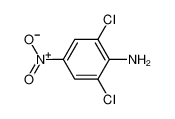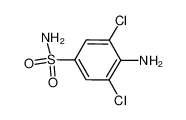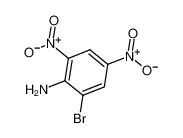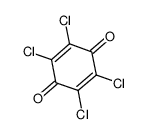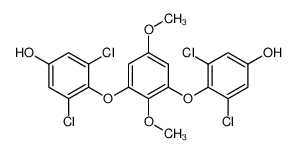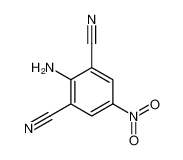| Product name | dicloran |
|---|
| Product number | - |
|---|---|
| Other names | 2,6-dichloro-4-nitroaniline |
| Identified uses | For industry use only. |
|---|---|
| Uses advised against | no data available |
| Company | MOLBASE (Shanghai) Biotechnology Co., Ltd. |
|---|---|
| Address | Floor 4 & 5, Building 12, No. 1001 North Qinzhou Road, Xuhui District, Shanghai, China |
| Telephone | +86(21)64956998 |
| Fax | +86(21)54365166 |
| Emergency phone number | +86-400-6021-666 |
|---|---|
| Service hours | Monday to Friday, 9am-5pm (Standard time zone: UTC/GMT +8 hours). |
Acute toxicity - Oral, Category 2
Acute toxicity - Dermal, Category 1
Acute toxicity - Inhalation, Category 2
Specific target organ toxicity – repeated exposure, Category 2
Hazardous to the aquatic environment, long-term (Chronic) - Category Chronic 2
2.2 GHS label elements, including precautionary statements| Pictogram(s) |    |
|---|---|
| Signal word | Danger |
| Hazard statement(s) | H300 Fatal if swallowed H310 Fatal in contact with skin H330 Fatal if inhaled H373 May cause damage to organs through prolonged or repeated exposure H411 Toxic to aquatic life with long lasting effects |
| Precautionary statement(s) | |
| Prevention | P264 Wash ... thoroughly after handling. P270 Do not eat, drink or smoke when using this product. P262 Do not get in eyes, on skin, or on clothing. P280 Wear protective gloves/protective clothing/eye protection/face protection. P260 Do not breathe dust/fume/gas/mist/vapours/spray. P271 Use only outdoors or in a well-ventilated area. P284 [In case of inadequate ventilation] wear respiratory protection. P273 Avoid release to the environment. |
| Response | P301+P310 IF SWALLOWED: Immediately call a POISON CENTER/doctor/… P321 Specific treatment (see ... on this label). P330 Rinse mouth. P302+P352 IF ON SKIN: Wash with plenty of water/... P310 Immediately call a POISON CENTER/doctor/… P361+P364 Take off immediately all contaminated clothing and wash it before reuse. P304+P340 IF INHALED: Remove person to fresh air and keep comfortable for breathing. P320 Specific treatment is urgent (see ... on this label). P314 Get medical advice/attention if you feel unwell. P391 Collect spillage. |
| Storage | P405 Store locked up. P403+P233 Store in a well-ventilated place. Keep container tightly closed. |
| Disposal | P501 Dispose of contents/container to ... |
none
3.Composition/information on ingredients 3.1 Substances| Chemical name | Common names and synonyms | CAS number | EC number | Concentration |
|---|---|---|---|---|
| dicloran | dicloran | 99-30-9 | none | 100% |
Consult a physician. Show this safety data sheet to the doctor in attendance.
If inhaledFresh air, rest.
In case of skin contactRemove contaminated clothes. Rinse and then wash skin with water and soap.
In case of eye contactFirst rinse with plenty of water for several minutes (remove contact lenses if easily possible), then refer for medical attention.
If swallowedRinse mouth.
4.2 Most important symptoms/effects, acute and delayedSYMPTOMS: Symptoms of exposure to this compound may include irritation of the nose, eyes, skin and throat, coughing, chest discomfort, nausea and vomiting. Absorption into the body leads to the formation of methemoglobin which in sufficient concentrations causes cyanosis. Exposure to this compound may also cause sensitization and bladder irritation.
4.3 Indication of immediate medical attention and special treatment needed, if necessaryGastrointestinal decontamination. If a large amount of the fungicide has been ingested in the last few hours, and if copious vomiting has not already occurred, it may be reasonable to consider GI decontamination. Activated charcoal can be used along with the addition of the cathartic sorbitol to the charcoal slurry. If sorbitol is given separately, it should be diluted with an equal volume of water before administration. No more than one dose of sorbitol is recommended and it should be used with caution in children and the elderly. If contact with the toxicant has been minimal (for example, oral contamination only, promptly flushed out of the mouth), administration of charcoal without a cathartic, followed by careful observation of the patient, probably represents optimal management. /Substituted benzenes/
5.Fire-fighting measures 5.1 Extinguishing media Suitable extinguishing mediaAppropriate Extinguishing Media: water spray, Class A, B or C extinguisher. /Botran 5F Fungicide/
5.2 Specific hazards arising from the chemicalFlash point data for this chemical are not available; however, it is probably combustible.
5.3 Special protective actions for fire-fightersWear self-contained breathing apparatus for firefighting if necessary.
6.Accidental release measures 6.1 Personal precautions, protective equipment and emergency proceduresUse personal protective equipment. Avoid dust formation. Avoid breathing vapours, mist or gas. Ensure adequate ventilation. Evacuate personnel to safe areas. Avoid breathing dust. For personal protection see section 8.
6.2 Environmental precautionsPersonal protection: particulate filter respirator adapted to the airborne concentration of the substance. Do NOT wash away into sewer. Sweep spilled substance into covered containers. If appropriate, moisten first to prevent dusting. Carefully collect remainder. Then store and dispose of according to local regulations.
6.3 Methods and materials for containment and cleaning upDo not contaminate /receiving/ water when disposing of equipment, washwaters or rinsate. /Botran 5F Fungicide/
7.Handling and storage 7.1 Precautions for safe handlingAvoid contact with skin and eyes. Avoid formation of dust and aerosols. Avoid exposure - obtain special instructions before use.Provide appropriate exhaust ventilation at places where dust is formed. For precautions see section 2.2.
7.2 Conditions for safe storage, including any incompatibilitiesProvision to contain effluent from fire extinguishing. Separated from food and feedstuffs.Do not contaminate water, food or feed by storage ... Store in original container and keep closed. Store in a cool, dry place. /Botran 5F Fungicide/
8.Exposure controls/personal protection 8.1 Control parameters Occupational Exposure limit valuesno data available
Biological limit valuesno data available
8.2 Appropriate engineering controlsHandle in accordance with good industrial hygiene and safety practice. Wash hands before breaks and at the end of workday.
8.3 Individual protection measures, such as personal protective equipment (PPE) Eye/face protectionSafety glasses with side-shields conforming to EN166. Use equipment for eye protection tested and approved under appropriate government standards such as NIOSH (US) or EN 166(EU).
Skin protectionWear impervious clothing. The type of protective equipment must be selected according to the concentration and amount of the dangerous substance at the specific workplace. Handle with gloves. Gloves must be inspected prior to use. Use proper glove removal technique(without touching glove's outer surface) to avoid skin contact with this product. Dispose of contaminated gloves after use in accordance with applicable laws and good laboratory practices. Wash and dry hands. The selected protective gloves have to satisfy the specifications of EU Directive 89/686/EEC and the standard EN 374 derived from it.
Respiratory protectionWear dust mask when handling large quantities.
Thermal hazardsno data available
9.Physical and chemical properties| Physical state | yellow needle crystal |
|---|---|
| Colour | Yellow needles from alcohol and acetic acid |
| Odour | Odorless |
| Melting point/ freezing point | -46°C(lit.) |
| Boiling point or initial boiling point and boiling range | 130°C/2.3mmHg(lit.) |
| Flammability | Combustible. Gives off irritating or toxic fumes (or gases) in a fire. |
| Lower and upper explosion limit / flammability limit | no data available |
| Flash point | 64°C(lit.) |
| Auto-ignition temperature | no data available |
| Decomposition temperature | no data available |
| pH | no data available |
| Kinematic viscosity | no data available |
| Solubility | In water:1 g/L (60 ºC) |
| Partition coefficient n-octanol/water (log value) | log Kow = 2.80 at 25°C |
| Vapour pressure | 1.2e-06 mm Hg at 20°C |
| Density and/or relative density | 1.624g/cm3 |
| Relative vapour density | no data available |
| Particle characteristics | no data available |
no data available
10.2 Chemical stabilitySTABLE TO HYDROLYSIS & OXIDATION
10.3 Possibility of hazardous reactions... NON-FLAMMABLEDust explosion possible if in powder or granular form, mixed with air.DICHLORAN is incompatible with acids, acid chlorides, acid anhydrides, and strong oxidizing agents .
10.4 Conditions to avoidno data available
10.5 Incompatible materialsno data available
10.6 Hazardous decomposition productsWhen heated to decomposition it emits toxic fumes of /hydrogen chloride and nitrogen oxides/.
11.Toxicological information Acute toxicity- Oral: LD50 Guinea pig oral 1450 mg/kg
- Inhalation: no data available
- Dermal: no data available
no data available
Serious eye damage/irritationno data available
Respiratory or skin sensitizationno data available
Germ cell mutagenicityno data available
Carcinogenicityno data available
Reproductive toxicityno data available
STOT-single exposureno data available
STOT-repeated exposureno data available
Aspiration hazardno data available
12.Ecological information 12.1 Toxicity- Toxicity to fish: LC50; Species: Lepomis macrochirus (Bluegill); Conditions: freshwater, static; Concentration: 37000 ug/L for 96 hr
- Toxicity to daphnia and other aquatic invertebrates: EC50; Species: Daphnia magna (Water flea) age <24 hr; Conditions: freshwater, static; Concentration: 2070 ug/L for 48 hr (95% confidence interval: 1800-2400 ug/L) /97% purity formulation
- Toxicity to algae: no data available
- Toxicity to microorganisms: no data available
(14)C-Labeled CO2 was evolved when labeled 2,6-dichloro-4-nitroaniline was applied to silt loam soils which had been receiving 2,6-dichloro-4-nitroaniline fungicide applications for several years(1,2); the rate of degradation was observed to increase as new additions of 2,6-dichloro-4-nitroaniline were applied to these soils over a period of several weeks(1,2); sterilization of these soils by steam, sodium azide, silver nitrate or mercuric chloride inhibited the decomposition completely(2); applications of 2,6-dichloro-4-nitroaniline to a soil which had not received previous applications evolved no labeled CO2(1,2). Over an incubation period of 1-2 months in both anaerobic (flooded) and aerobic soil conditions in three different CA soils, the degradation rate of 2,6-dichloro-4-nitroaniline was observed to be 2.5 to over 20 times faster in non-sterile soil versus sterile soil suggesting that microbial degradation is the major degradation process in soil(3).
12.3 Bioaccumulative potential2,6-Dichloro-4-nitroaniline has a moderate potential to bio-accumulate in fish tissue based on a bioconcentration study which indicated a bioconcentration factor (BCF) of 136 in whole fish tissue(1); however, the bioaccumulated residues were almost completely eliminated from fish tissues (86-98%) during a 7-14 day depuration period(1). An estimated BCF of 33 can be calculated in fish for 2,6-dichloro-4-nitroaniline(SRC), using a log Kow of 2.80(2) and a regression-derived equation(3). According to a classification scheme(4), a BCF of 33 suggests the potential for bioconcentration in aquatic organisms is moderate(SRC).
12.4 Mobility in soilMeasured Koc values for 2,6-dichloro-4-nitroaniline in a variety of soils are reported to range from 660 to 1100(1). A 2,6-dichloro-4-nitroaniline Koc value of 1000, based on measured data, is recommended for developing QSAR estimation methods(2). According to a classification scheme(3), these Koc values suggests that 2,6-dichloro-4-nitroaniline is expected to have low mobility in soil. Mobility is expected to increase in coarser soils(4).
12.5 Other adverse effectsno data available
13.Disposal considerations 13.1 Disposal methods ProductThe material can be disposed of by removal to a licensed chemical destruction plant or by controlled incineration with flue gas scrubbing. Do not contaminate water, foodstuffs, feed or seed by storage or disposal. Do not discharge to sewer systems.
Contaminated packagingContainers can be triply rinsed (or equivalent) and offered for recycling or reconditioning. Alternatively, the packaging can be punctured to make it unusable for other purposes and then be disposed of in a sanitary landfill. Controlled incineration with flue gas scrubbing is possible for combustible packaging materials.
14.Transport information 14.1 UN Number| ADR/RID: UN2735 | IMDG: UN2735 | IATA: UN2735 |
| ADR/RID: AMINES, LIQUID, CORROSIVE, N.O.S. or POLYAMINES, LIQUID, CORROSIVE, N.O.S. |
| IMDG: AMINES, LIQUID, CORROSIVE, N.O.S. or POLYAMINES, LIQUID, CORROSIVE, N.O.S. |
| IATA: AMINES, LIQUID, CORROSIVE, N.O.S. or POLYAMINES, LIQUID, CORROSIVE, N.O.S. |
| ADR/RID: 8 | IMDG: 8 | IATA: 8 |
| ADR/RID: III | IMDG: III | IATA: III |
| ADR/RID: yes | IMDG: yes | IATA: yes |
no data available
14.7 Transport in bulk according to Annex II of MARPOL 73/78 and the IBC Codeno data available
15.Regulatory information 15.1 Safety, health and environmental regulations specific for the product in question| Chemical name | Common names and synonyms | CAS number | EC number |
|---|---|---|---|
| dicloran | dicloran | 99-30-9 | none |
| European Inventory of Existing Commercial Chemical Substances (EINECS) | Listed. | ||
| EC Inventory | Listed. | ||
| United States Toxic Substances Control Act (TSCA) Inventory | Listed. | ||
| China Catalog of Hazardous chemicals 2015 | Not Listed. | ||
| New Zealand Inventory of Chemicals (NZIoC) | Listed. | ||
| Philippines Inventory of Chemicals and Chemical Substances (PICCS) | Listed. | ||
| Vietnam National Chemical Inventory | Not Listed. | ||
| Chinese Chemical Inventory of Existing Chemical Substances (China IECSC) | Listed. | ||
| Creation Date | Aug 12, 2017 |
|---|---|
| Revision Date | Aug 12, 2017 |
- CAS: Chemical Abstracts Service
- ADR: European Agreement concerning the International Carriage of Dangerous Goods by Road
- RID: Regulation concerning the International Carriage of Dangerous Goods by Rail
- IMDG: International Maritime Dangerous Goods
- IATA: International Air Transportation Association
- TWA: Time Weighted Average
- STEL: Short term exposure limit
- LC50: Lethal Concentration 50%
- LD50: Lethal Dose 50%
- EC50: Effective Concentration 50%
- IPCS - The International Chemical Safety Cards (ICSC), website: http://www.ilo.org/dyn/icsc/showcard.home
- HSDB - Hazardous Substances Data Bank, website: https://toxnet.nlm.nih.gov/newtoxnet/hsdb.htm
- IARC - International Agency for Research on Cancer, website: http://www.iarc.fr/
- eChemPortal - The Global Portal to Information on Chemical Substances by OECD, website: http://www.echemportal.org/echemportal/index?pageID=0&request_locale=en
- CAMEO Chemicals, website: http://cameochemicals.noaa.gov/search/simple
- ChemIDplus, website: http://chem.sis.nlm.nih.gov/chemidplus/chemidlite.jsp
- ERG - Emergency Response Guidebook by U.S. Department of Transportation, website: http://www.phmsa.dot.gov/hazmat/library/erg
- Germany GESTIS-database on hazard substance, website: http://www.dguv.de/ifa/gestis/gestis-stoffdatenbank/index-2.jsp
- ECHA - European Chemicals Agency, website: https://echa.europa.eu/





